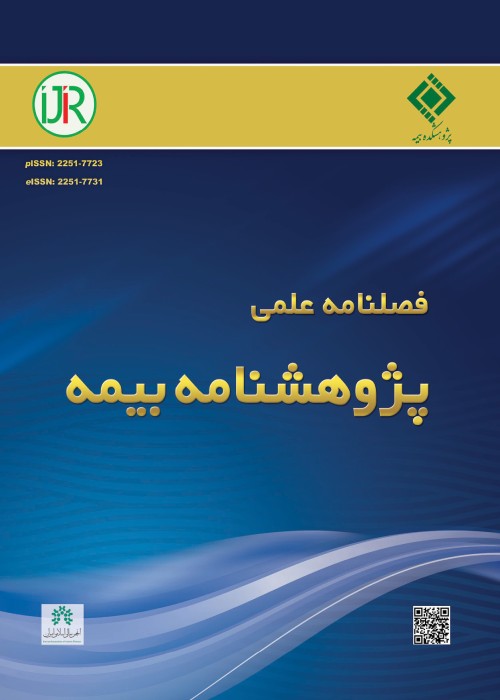Designing Insuretech Acceptance Model Via Interpretive- Structural Modeling
The development of insurance technology in the Iranian insurance industry and its acceptance by customers increase insurance penetration and reduce violations and frauds, as well as costs. Despite the growth in the number of internet and app users, Insurance startups have a small share in the premiums produced. The necessity to conduct this research is quite clear owing to the importance of technology acceptance in the insurance industry and the role of startups in countries’ GDP. An investigation of readiness to accept InsurTech is a critical challenge that should be considered when implementing any type of technology. Therefore, the success of insurance startups is not limited to the industry’s authority, but it also includes identifying effective factors in users’ acceptance. In addition, if this technology is not utilized with all its features and technical capabilities, it will not achieve efficiency. These features are effective when they are accepted. This research mainly aims to design a model for insurance technology acceptance using interpretive structural modeling (ISM).
This research uses grounded theory and interpretive structural modeling to design a technology acceptance model in the insurance industry. The grounded theory and 43 in-depth interviews with experts were used to identify factors affecting insurance technology acceptance. The interviews were conducted from December 2019 to May 2020 until theoretical saturation was achieved. Then, the thematic analysis was used to determine, analyze, and explain models within the data, and a confirmatory technique was applied to validate qualitative data. In the next stage, interpretive structural modeling was utilized to design the model and identify the constructs and relationships. The validity of the qualitative findings was assessed by interviewees during the interviews, and transcriptions of interview contents were reviewed carefully and immediately after each interview. The accuracy of concepts and themes extracted in terms of coordination with the reality was verified by comparing and reviewing interview texts. In addition, the impact of the themes obtained by the grounded theory was assessed using the structural-interpretive questionnaire distributed among ten interviewees.
The initial technology acceptance model was designed by interpretive structural modeling. According to the influence-dependence power diagram, support, legitimization, cultural development, and performance have a high influence power and low dependence power, and they are placed at the quadrant of independent variables. Moreover, price, cooperation, trust, and purchase advantages have a high dependency power and low influence power, and they are considered dependent variables. Constraints and complexity also have similar influence power and dependence power, and thus, they are linkage variables. Finally, among the variables, support with the highest influence power and lowest dependence power has the greatest effect on capacitation, while the trust with the lowest influence power and highest dependence power is the first level or dependent variable. It should be noted that none of the variables was laid in the autonomous quadrant. Since the variables of support, legitimization, cultural development, and performance have high driving power and influence power, these variables should be considered by the industry’s authority to create a supportive atmosphere toward InsurTechs. They should provide appropriate resources, and boost infrastructures for sustainable development of InsurTechs. On the other hand, the variables of price, cooperation, trust, and purchase advantages have a high dependency power, and InsurTech companies should help to develop and increase national insurance penetration by presenting up-to-date marketing techniques, interacting with insurers concerning the attraction of customer trust in the insurance services and resolving their anxiety about their purchase, and creating attractiveness in customer purchase by providing unique advantages and more appropriate prices and conditions relative to traditional companies. According to the results, the variables of constraints and complexity have a high driving power. In other words, they give and receive high effects, and any change in these variables leads to fundamental changes.
Resolving legal barriers by industry’s authority, providing suitable insurance services by startups, and facilitating the process are necessary activities. Acceptance of new technologies and cooperation among insurance companies and startups are the first step that should be considered by InsurTechs firmly toward the acceptance of technology by employees and customers. Furthermore, attracting the trust and interest of top managers of insurance companies is an important task of insurance startups so that they provide a context to customers’ further participation by ensuring the protection of their information. Cooperation among insurance companies and insurance startups in providing appropriate price and conditions, facilitating the access of InsurTechs, as business partners, to the real premium, and creating a platform to present unified web services by the industry’s authority and insurer companies jointly are required for the acceptance of this technology. Support of the insurance industry in legitimizing and fostering the infrastructure for insurance startups decreases constraints. On the other hand, trust and cooperation of insurance companies with InsurTechs increase the customers’ acceptance of the insurance technology and use of purchase advantages achieved by this strategy. The results indicate that support has the greatest impact on capacitation, while trust is the most affected variable.
- حق عضویت دریافتی صرف حمایت از نشریات عضو و نگهداری، تکمیل و توسعه مگیران میشود.
- پرداخت حق اشتراک و دانلود مقالات اجازه بازنشر آن در سایر رسانههای چاپی و دیجیتال را به کاربر نمیدهد.




